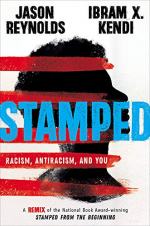
|
| Name: _________________________ | Period: ___________________ |
This test consists of 15 multiple choice questions and 5 short answer questions.
Multiple Choice Questions
1. What racist film did Woodrow Wilson screen at the White House?
(a) The Birth of a Nation.
(b) Tarzan.
(c) Spaghetti Western.
(d) Black KKKlansman.
2. Who followed John F. Kennedy as president of the United States?
(a) Gerald Ford.
(b) Jimmy Carter.
(c) Lyndon Baines Johnson.
(d) Richard Nixon.
3. Which famous Black novelist do Reynolds and Kendo point out was notably not invited to speak at the March on Washington?
(a) James Baldwin.
(b) Langston Hughes.
(c) Zadie Smith.
(d) Toni Morrison.
4. When did Stokely Carmichael first come to the United States?
(a) 1954.
(b) 1952.
(c) 1945.
(d) 1960.
5. What did the Fifteenth Amendment allow for?
(a) Blacks could vote after reaching the age of 30.
(b) Blacks had to pass a literacy test before voting.
(c) Blacks men could vote, but Black women could not.
(d) No one could be prohibited from voting due to race, color, or previous condition of servitude.
6. Where was Angela Davis from?
(a) Raleigh.
(b) Chicago.
(c) Birmingham.
(d) Pittsburgh.
7. Which famous novel do Reynolds and Kendi mention in Chapter 20 and then quickly dismiss?
(a) Sankofa.
(b) Peyton Place.
(c) To Kill a Mockingbird.
(d) Zarthura.
8. What initiative did President Franklin D. Roosevelt implement in the 1930s?
(a) The New Deal.
(b) The Spring Deal.
(c) The End Deal.
(d) The Prosperity Deal.
9. Who did Du Bois ask to come speak at Atlanta University, where he was teaching, in 1906?
(a) Marshall Michbein.
(b) Albert Einstein.
(c) Nikola Tesla.
(d) Frank Boas.
10. What institution did Booker T. Washington attend?
(a) Harvard University.
(b) Yale University.
(c) The Tuskegee Institute.
(d) Princeton University.
11. What was a major problem with the Black Power movement, according to Reynolds and Kendi?
(a) It lacked clear leadership.
(b) It lacked money.
(c) Its leaders were too young.
(d) It was sexist.
12. What was the period in history following the Civil War in the U.S. called?
(a) Reconstruction.
(b) Reveling.
(c) Refinancing.
(d) Rebooting.
13. What phrase did Carmichael introduce into the movement for Black equal rights?
(a) Black Wisdom.
(b) Black Power.
(c) Black Pride.
(d) Black Literature.
14. Where did violence start to occur immediately after the signing of the Voting Rights Act, according to Reynolds and Kendi in Chapter 22?
(a) The Greenfield neighborhood of Chicago.
(b) The South Side of East Bend.
(c) The Watts neighborhood of Los Angeles.
(d) The north side of Houston.
15. Where did Angela Davis go to study during her graduate years?
(a) Germany.
(b) England.
(c) Spain.
(d) Italy.
Short Answer Questions
1. Which book was the film The Birth of a Nation based upon?
2. What was W.E.B. Du Bois the "king" of, according to Reynolds and Kendi?
3. Which Supreme Court case ruled that school segregation in public schools was unconstitutional?
4. Where was Marcus Garvey originally from before coming to the U.S.?
5. Which Pennsylvania congressman fought for redistribution of land to award to former slaves after the Civil War?
|
This section contains 456 words (approx. 2 pages at 300 words per page) |

|




